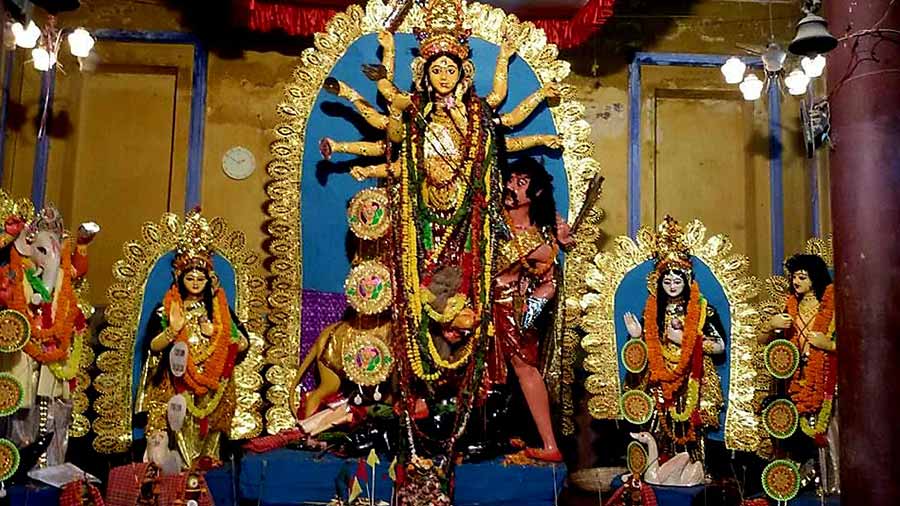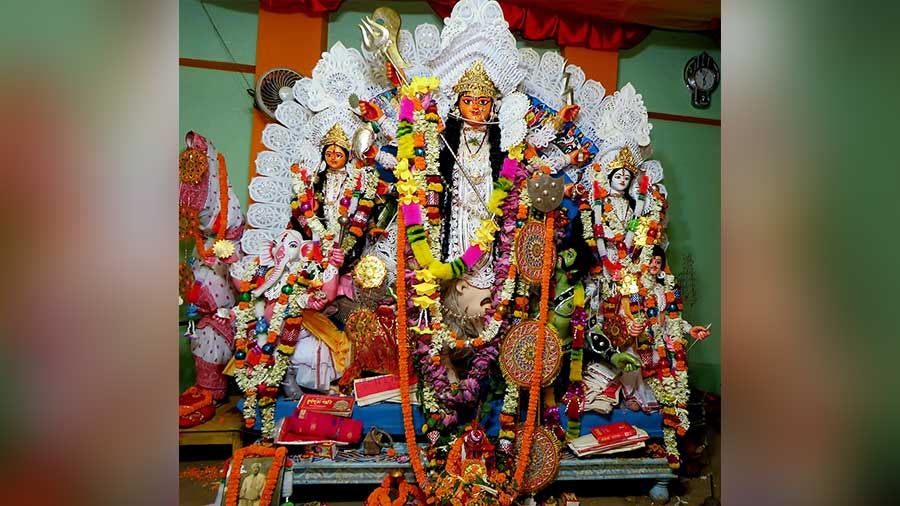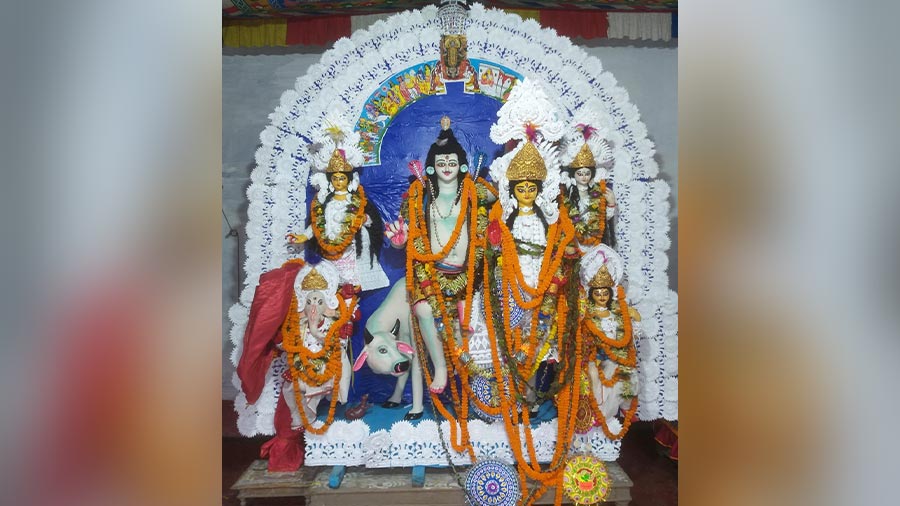The absence of the ekchala idol and the Kalikul Bamachari way of invocation are what set the puja of the Biswases of Cossipore apart.
The family pujas of Bengal have a few typical features. One of the most common among them is the ekchala Durga idol where we see Durga and all her children placed on a single pedestal. This is perhaps the first picture that comes to mind when one thinks about any bonedi barir pujo in Bengal.
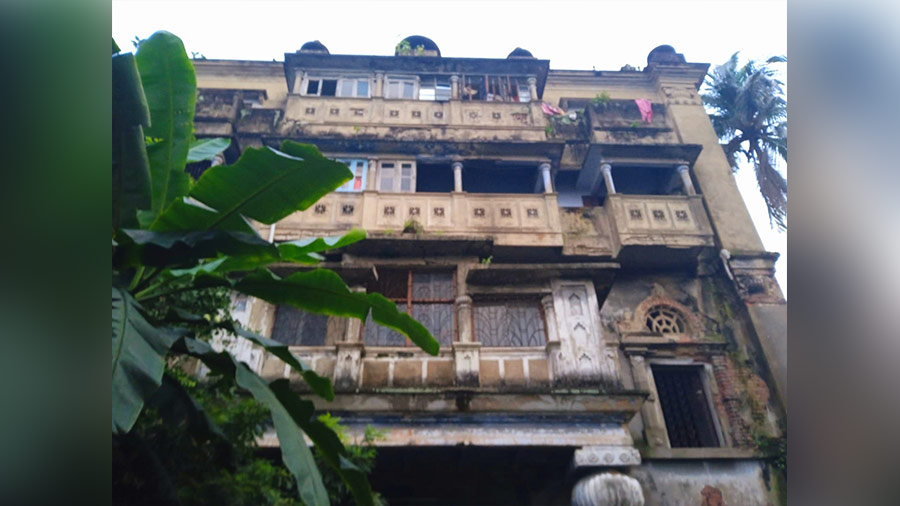
The palatial mansion of Biswases
Come to the palatial house of Biswases on Kolkata’s northern edge to witness an amazing exception of a Durga puja which is believed to be more than 300 years old and has its origin in East Bengal’s Faridpur. Here, surprisingly, the Durga idol is not ekchala but split into five different clusters.
In her well-researched book on Kumartuli’s idol-making evolution, Anita Agnighotri has mentioned that much before legendary sculptor Gopeshwar Paul introduced his creative idea of splitting the ekchala Durga idol into five, some idol-makers of East Bengal experimented it in many remote villages with limited social acceptance.
The family idol of Cossipore Biswases is reason enough to re-start the debate on who actually brought about this revolutionary change in Durga idol though family members also do not have any supporting evidence that their idol was split into five clusters before Gopeswar Paul did it in 1937.
If the idol is the first point that gives this family puja a distinction, the other thing is its ritual of animal sacrifice before the Devi.
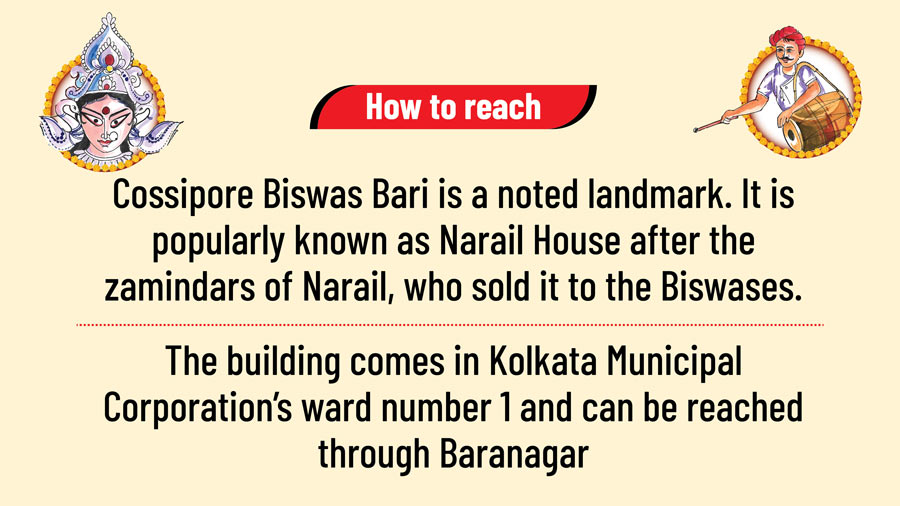
Here, the goddess is worshipped as per the Tantra cult deeply influenced by Baradakanta Bachaspati, the religious guru of the family.
It follows the Kalikul Bamachari way of invocation and that offers the celestial power to drink blood. On Mahanavami, nine animals are sacrificed before the Devi and immediately after the beheading of the animal, the fresh blood and five big pieces of sacrificed animal flesh are collected in an earthen pot and placed before the idol with banana and flowers.
Of these nine animals, three are given from the family sides and rest are offered by local people. This ritual as per Ranojoy Biswas is going on from the very beginning of the puja when it was started in their ancestral house of Bandabari–Kotalipara of Faridpur now in Bangladesh.
The fortune of the family came from the trading of jute in undivided Bengal and one Ram Dulal Biswas earned a huge wealth out of that. From 1909, Nakul Chandra Biswas started a business of wood and the family Durga Puja became one of the biggest Hindu festivals in Faridpur.v
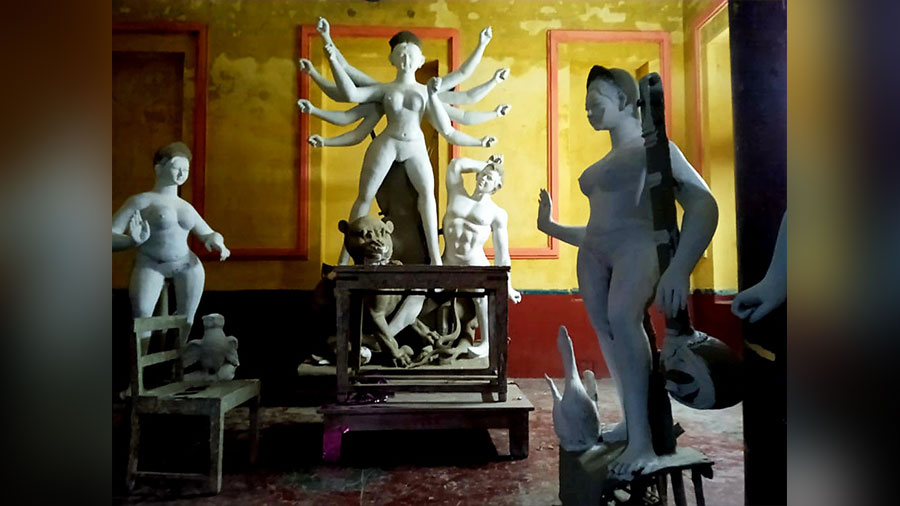
The family idol in the making
Present family members feel proud that in 1944-45 when the political situation in Bengal was in tumult, the family invested huge amounts to establish a massive school in Faridpur which is now one of the top educational institutes of Bangladesh. It is now known as Jagabandhu Biswas Higher Institution – JBP School in short.
However, the good days of the family vanished overnight with the Partition of India and their home falling in East Pakistan after 1947.
In the 1950s communal riots, the family lost a considerable portion of properties and wealth to communal looters and in 1952, most of them migrated to Calcutta and with that Durga Puja also moved. By 1964-66 their present abode of Cossipore was full with almost all members uprooted from East Pakistan.
Though the root was lost but not the tradition of Durga Puja of the family.
For many years, the idol-makers of the family used to travel from Gopalganj of Pakistan to Kolkata to make the idol every year. Later on when that family was also uprooted from the land and migrated to India the tradition continued. Nagen Pal who had made the family idol till 1988 later migrated to India and settled in Barasat. Now his son Shibu Pal makes the idol every year and it is made in the house of Biswas.
The puja begins on the day of Rath Yatra by worshipping the wooden structure of the idol.
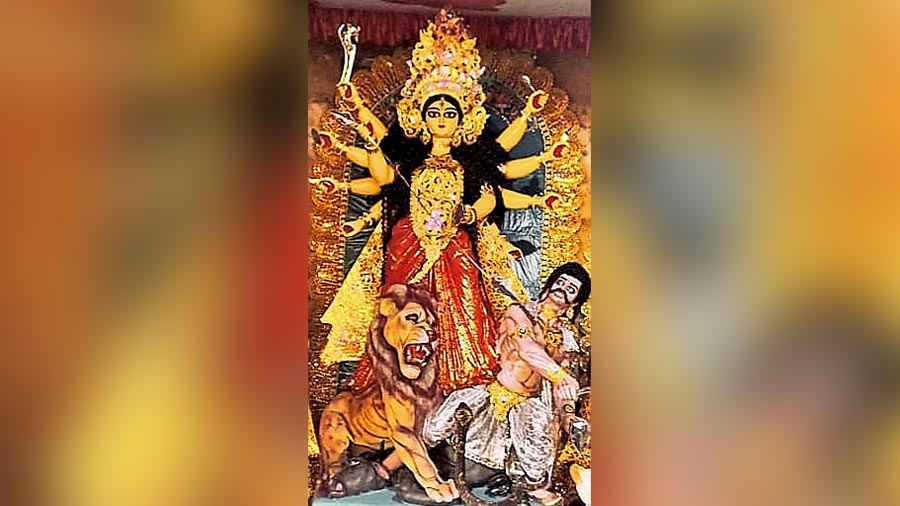
The Devi before the ‘bodhon’
On that day to eradicate evil spirits a few clay idols are also worshipped. During Puja days, the bhog and all other naibedya offerings to the goddess are cooked in a separate small house known as ranna bari and family members are not allowed to consume any chicken product during the Puja days.
The family puja still attracts a big number of family members and friends to the Cossipore mansion of Biswas which is a landmark in the locality. Though the number of participants are much lesser comparing olden days still the celebration reaches to its zenith on Maha Ashtami and Maha Navami when a large number of people gather to see Sandhi Puja and animal sacrifice ritual.
Ranjoy Biswas present member of the family mentions that in past two chief minister of West Bengal Dr Bidhan Chandra Roy and Prafulla Sen had paid visit to their puja. Even AK Anthony the former chief minister of Kerala also once paid a visit to this family puja with Ajit Panja. Ramkumar Chattopadhay was regular to this puja for many years.
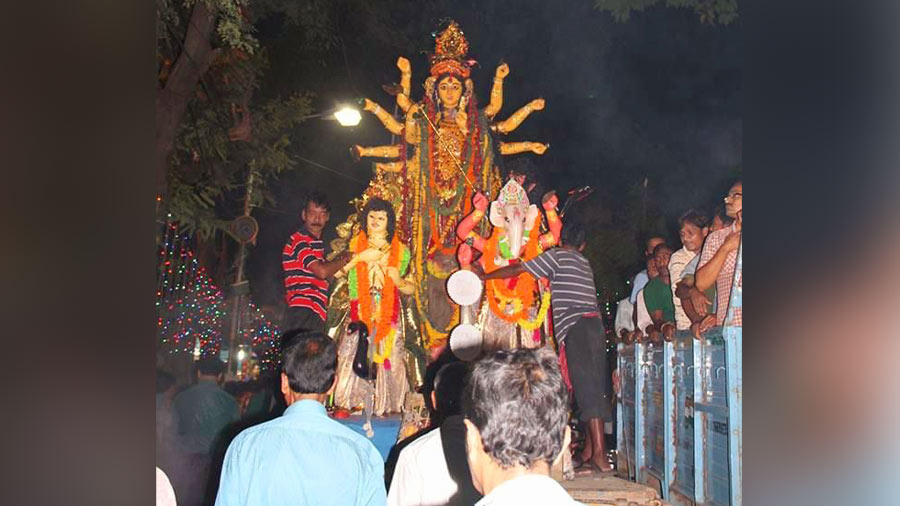
Members of the Biswas family join in the immersion procession
